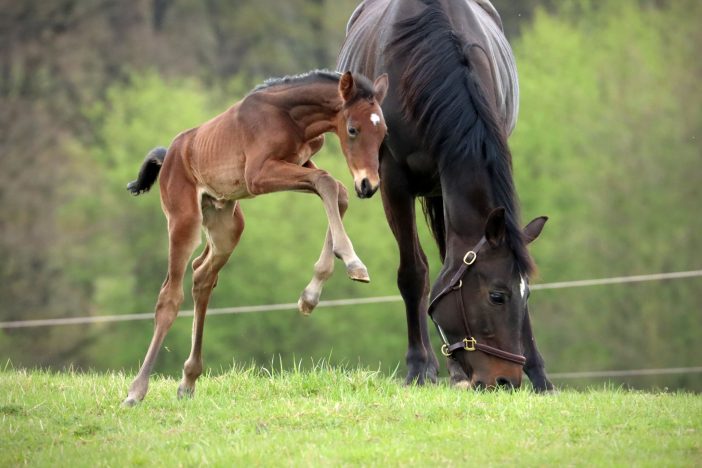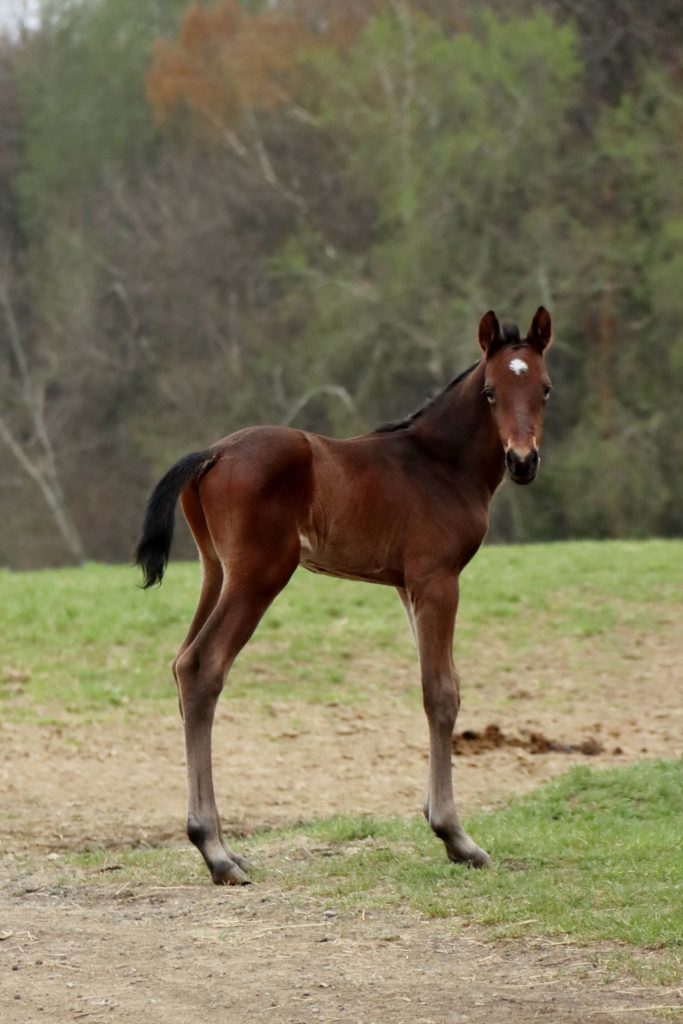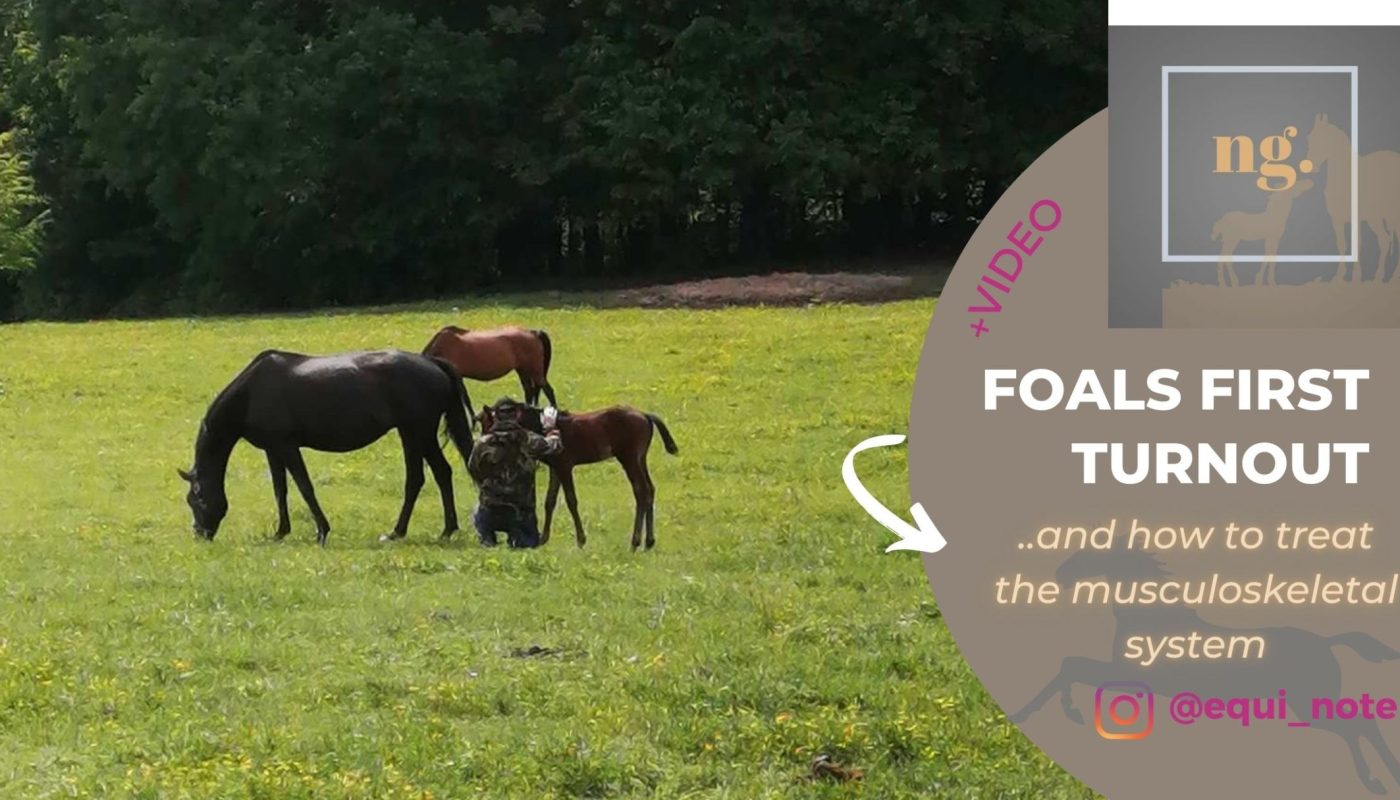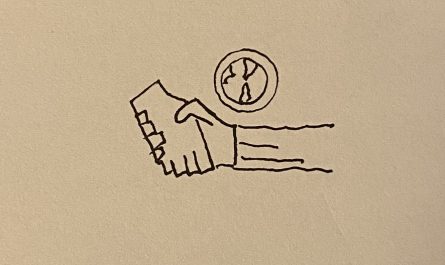
>>VIDEO BELOW<<
One cannot discuss, whether a movement overall is good for a horse- it is. However, with a newborn foal, there might be circumstances, telling us, whether and to what extent we should start letting the foal to turnout.
Some mares might be ready to go out immediately, for example when used for a daily movement in a form of 24/7, while others might appreciate a few days rest in the safeness of their stable, hence the birth could have been tough for them both physically or mentally. Watch out for the signals she might give you and in both cases, control her movement a bit. Organs and everything inside need to settle down again to prevent any kind of dislocation.

Apart from considering whether your mare is ready for turnout, there is also a lot to consider what concerns the foal. Don´t be scared immediately, if your foal seems to be rather tiny and too noble. Loose tendons are common in sports horses and usually get straight and firm in a few days/ weeks. If not, this is usually pretty much a solvable problem with splints and bandages, your orthopedic veterinarian will know how to proceed. Both ways, weak pasterns/ legs/ tendons need a movement; the best way is on hard ground. All-day grazing and a big field to move around with according surface is indeed a great advantage. And if you wanna make sure all is going in a good direction/ your foal is one of the harder cases, assure even the ground in the stable is harder than normally- for example, but a thin layer of shavings on the ground and straw only to the corner, so the foal can lay down in here when needed while standing on a harder ground as well.
Contracted tendons are on the opposite side of the bridge. Limbs might appear too steep, including hoofs in some cases. Solution? >Limit the movement, i.e. wait with turning out yet, soft beddings. No need to stress out even with the harder cases, where you don’t see the improvement- special injectables can be applied by your vet to soften them in the end.

One of the contracted tendon types is the limb being folded outwards. In this case, experienced breeders recommend limiting the grain both to foal and the mare and keeping them at home with a thick layer of beddings. After the tendons soften, it is time for a controlled movement, rather on a softer ground again, adding up the amount of movement daily.
Overall, if you don’t see some improvements even though following these pieces of advice any time soon, let´s say in two or three weeks, always contact your veterinarian, best way orthopedist.
You might already know the model from the pictures, as mentioned in the @foal-birth article. This has been his fourth day of life and third day out and he is getting stronger literally every day, also thanks to our proper fields and grazing! And the first day out? See the video bellow and enjoy the strenght differenced mentioned 🙂
If you have missed any of previous articles..:
1.You want that foal halter, don’t you? Part 1
2.You want that foal halter, don’t you? Part 2
3.Foal Kit + Instagram!
4.Foal birth+ FOAL REVEAL
Also don´t forget to contact me via Instagram account @equi_note or via the comment section with your feedbacks 🙂




![Bronze doit of the Dutch East India Company (VOC), depicting its date of production and the Company's monogram logo. The VOC's logo was possibly in fact the first globally recognized corporate logo.[1]](https://blog.hslu.ch/majorobm/files/2019/03/Münze_Niederländische_Ostindien_Companie-320x265.jpg)